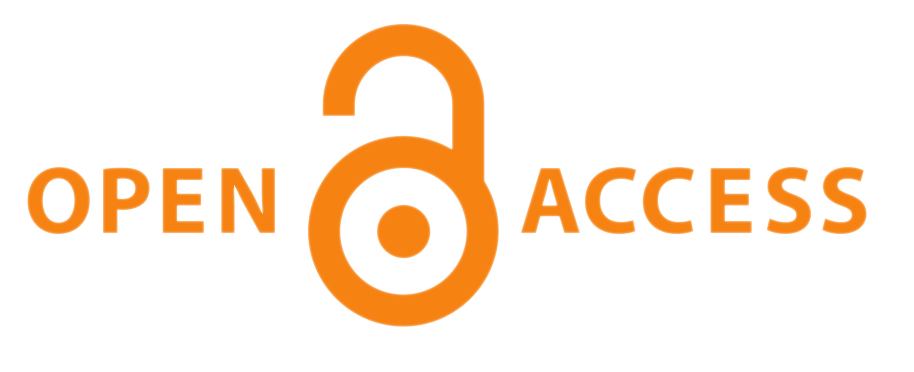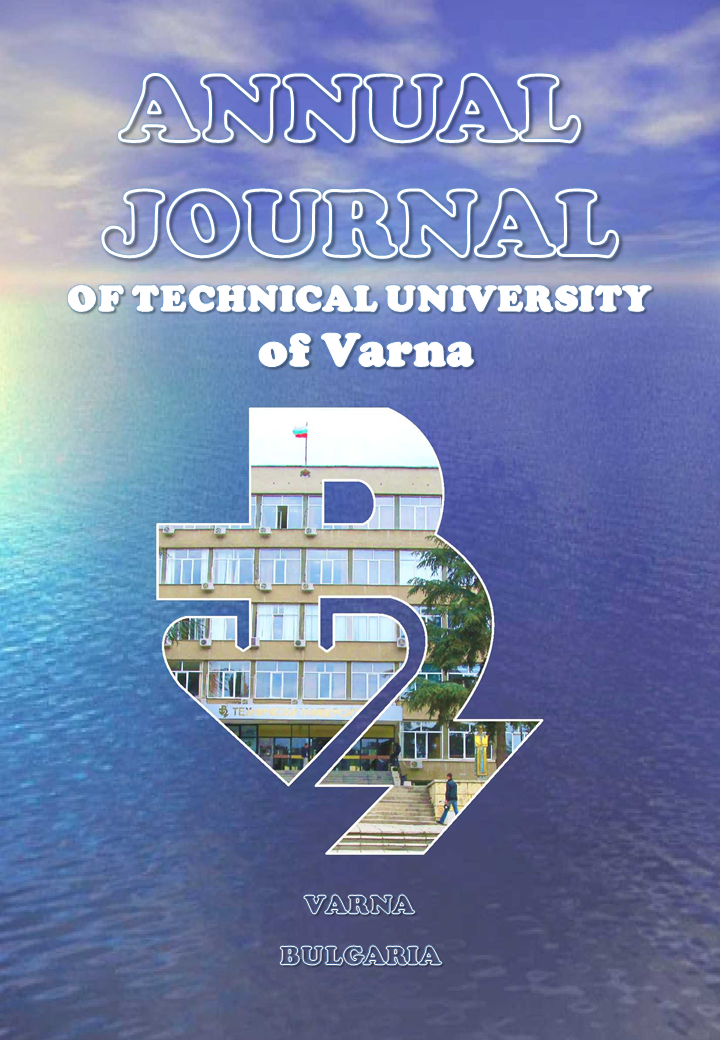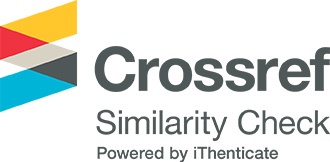Model for Research into the Factors Influencing the Effective Planning and Management of Production Capacity
DOI:
https://doi.org/10.29114/ajtuv.vol5.iss1.237Ключевые слова:
effective planning and management, production capacity, factors, self-interaction matrix, interpretive, structural modelingАннотация
In today's dynamic business environment, the success and competitiveness of any production organization is ensured by continuous improvement, sustainable development, effective planning and management. There is a growing scientific interest in the importance and relevance of production management in view of the strong need to redefine the policies and priorities within the respective strategic plan for business development - with increased focus on capacity planning in order for the industrial enterprises to adapt successfully to the dynamically changing conditions of the global environment and intense competition. Accordingly, full advantage is taken from the ample opportunities to study the impact of a number of factors on capacity planning and management. Based on an in-depth literature analysis, interviews and surveys, selected were 18 key factors that have a profound influence on the effective planning and capacity management of the production organization. Using the relationship between each of these factors and the capacity management is closely examined by applying the method of Interpretive Structural Modeling (ISM). Additionally, the interrelationships between the key factors under study are further analyzed by means of a Structural self-interaction matrix (SSIM).
Скачивания
Библиографические ссылки
<p>Attri, R., Dev, N., Sharma, V. (2013). Interpretative Structural Modelling (ISM) approach: An Overview, <em>Res. J. Management Sci</em>.,<em> 2319</em>(2), 1171.<br /><a href="https://scholar.google.com/scholar?hl=bg&as_sdt=0%2C5&q=Attri%2C+R.%2C+Dev%2C+N.%2C+Sharma%2C+V.+%282013%29.+Interpretative+Structural+Modelling+%28ISM%29+approach%3A+An+Overview%2C+Res.+J.+Management+Sci.%2C+2319%282%29%2C+1171.&btnG=" target="_blank">Google Scholar</a></p>
<p>Chase, R.B. & Zhang, A (1998), "Operations management: internationalization and interdisciplinary integration", <em>International Journal of Operations & Production Management</em>, <em>18</em><em>(</em>7), 663-667. <br /> <a href="https://doi.org/10.1108/01443579810217648" target="_blank">Crossref</a></p>
<p>Dima, I. C. (Ed.). (2013). <em>Industrial production management in flexible manufacturing systems</em>. IGI Global. (pp 41-45).<br /> <a href="https://doi.org/10.4018/978-1-4666-2818-2" target="_blank">Crossref</a></p>
<p>Frost, P. J., Moore, L. F., Louis, M. R. E., Lundberg, C. C., & Martin, J. E. (1985). <em>Organizational culture</em>. Sage Publications, Inc.<br /><a href="https://scholar.google.com/scholar?hl=bg&as_sdt=0%2C5&q=Frost%2C+P.+J.%2C+Moore%2C+L.+F.%2C+Louis%2C+M.+R.+E.%2C+Lundberg%2C+C.+C.%2C+%26+Martin%2C+J.+E.+%281985%29.%C2%A0Organizational+culture.+Sage+Publications%2C+Inc.&btnG=" target="_blank">Google Scholar</a></p>
<p>Gupta, S., & Starr, M. K. (2014). Production and operations management systems. Boca Raton, FL: CRC Press. (pp 134-136). <br /><a href="https://doi.org/10.1201/b16470" target="_blank">Crossref</a></p>
<p>Krishnaswamy, K. N., Sivakumar, A. I., & Mathirajan, M. (2006). <em>Management research methodology: Integration of principles, methods and techniques</em>. Pearson Education India. (pp 91-92).<br /><a href="https://scholar.google.com/scholar?hl=bg&as_sdt=0%2C5&q=Krishnaswamy%2C+K.+N.%2C+Sivakumar%2CA.+I.%2C+Mathirajan%2C+M.+%283th+edition%2C+2009%29.+Management+Research+Methodology%3A+Integration+of+Principles%2C+Methods+and+Techniques.+%28pp+91-92%29.&btnG=" target="_blank">Google Scholar</a></p>
<p>Makedonska, D., Dimitrov, Iv. (1997). <em>Production Management</em>. Varna. (pp 75- 78).</p>
<p>Nel, W. (2<sup>nd</sup> ed., 2006). <em>Management for engineers, technologists and scientists</em>. Juta and Company Ltd.<br /><a href="https://scholar.google.com/scholar?hl=bg&as_sdt=0%2C5&q=Nel%2C+W.+%282nd+ed.%2C+2006%29.+Management+for+engineers%2C+technologists+and+scientists.+Juta+and+Company+Ltd.&btnG=" target="_blank">Google Scholar</a></p>
<p>Panayotova, T. (2004). <em>Modeling of organizational relations in the development of complex project tasks in the conditions of Competitive Engineering</em>. Abstract of a PhD dissertation</p>
<p>Sage, A. (1977). <em>Interpretive Structural Modelling: Methodology for Large-scale Systems</em>. New York, NY: Mc Graw-Hill, pp 91-164. <br /><a href="https://scholar.google.com/scholar?hl=bg&as_sdt=0%2C5&q=Sage%2C+A.+%281977%29.+Interpretive+Structural+Modelling%3A+Methodology+for+Large-scale+Systems.+New+York%2C+NY%3A+Mc+Graw-Hill%2C+pp+91-164.%C2%A0%C2%A0&btnG=" target="_blank">Google Scholar</a></p>
<p>Schimitzek, P. (2004). <em>The Efficient Enterprise: Increased Corporate Success with Industry-Specific Information Technology and Knowledge Management</em>. CRC Press.<br /><a href="https://scholar.google.com/scholar?hl=bg&as_sdt=0%2C5&q=Schimitzek%2C+P.+%282004%29.+The+Efficient+Enterprise%3A+Increased+Corporate+Success+with+Industry-Specific+Information+Technology+and+Knowledge+Management.+CRC+Press.&btnG=" target="_blank">Google Scholar</a></p>
<p>Sharpe, M.E. (1979). <em>Problems of Economics</em>. (pp 4-5).</p>
<p>Swamidass, P. M. (Ed.). (2000). <em>Encyclopedia of production and manufacturing management</em>. Springer Science & Business Media. <br /><a href="https://doi.org/10.1007/1-4020-0612-8" target="_blank">Crossref</a></p>
<p>Bartels, J., Peters, O., de Jong, M., Pruyn, A., & van der Molen, M. (2010). Horizontal and vertical communication as determinants of professional and organisational identification. <em>Personnel Review</em>.<br /> <a href="https://doi.org/10.1108/00483481011017426" target="_blank">Crossref</a></p>
<p>Behl, A., & Pal, A. (2020). Interpretive Structural Modeling: Background, Concepts, and Application. In <em>Multi-Criteria Decision Analysis in Management</em> (pp. 1-27). IGI Global.<br /> <a href="https://doi.org/10.4018/978-1-7998-2216-5.ch001" target="_blank">Crossref</a></p>
<p>Brönner, M., Wolff, S., Jovanovic, J., Keuthen, K., & Lienkamp, M. (2020). Production Strategy Development: Simulation of Dependencies Using Recurrent Fuzzy Systems. <em>Systems</em>, <em>8</em>(1), 1.<br /><a href="https://doi.org/10.3390/systems8010001" target="_blank">Crossref</a></p>
<p>Burns, O. M., Turnipseed, D., & Riggs, W. E. (1991). Critical success factors in manufacturing resource planning implementation. <em>International Journal of Operations & Production Management</em>.<br /><a href="https://scholar.google.com/scholar?hl=bg&as_sdt=0%2C5&q=Burns%2C+O.+M.%2C+Turnipseed%2C+D.%2C+%26+Riggs%2C+W.+E.+%281991%29.+Critical+success+factors+in+manufacturing+resource+planning+implementation.+International+Journal+of+Operations+%26+Production+Management.&btnG=" target="_blank">Google Scholar</a></p>
<p>DuBrin, A. J. (8<sup>th</sup> ed. 2008). <em>Essentials Of Management</em>. Cengage Learning, USA</p>
<p>Olhager, J. (2013). Evolution of operations planning and control: from production to supply chains. <em>International journal of production research</em>, <em>51</em>(23-24), 6836-6843. <br /><a href="https://doi.org/10.1080/00207543.2012.761363" target="_blank">Crossref</a></p>
<p>Radojičić, M., Vasović, J. , Paunović, Vl., & Nesic, Z. (2016). An analysis of capacity utilization in industrial production in function of rational resource use.<br /><a href="https://doi.org/10.5937/IMK1603091R" target="_blank">Crossref</a></p>
<p>Shimizu, K., & Hitt, M. A. (2004). Strategic flexibility: Organizational preparedness to reverse ineffective strategic decisions. <em>Academy of Management Perspectives</em>, <em>18</em>(4), 44-59.<br /><a href="https://doi.org/10.5465/ame.2004.15268683" target="_blank">Crossref</a></p>
<p>Umble, E. J., Haft, R. R., & Umble, M. M. (2003). Enterprise resource planning: Implementation procedures and critical success factors. <em>European journal of operational research</em>, <em>146</em>(2), 241-257. <br /><a href="https://doi.org/10.1016/S0377-2217(02)00547-7" target="_blank">Crossref</a></p>
<p>Wasif, S. M. (June 11, 2016). Standards Of Top Management Commitment. eLearning Industry. Retrieved May 21, 2016 from <a href="https://elearningindustry.com/standards-top-management-commitment">https://elearningindustry.com/standards-top-management-commitment</a>.</p>
<p>Winroth, M., Säfsten, K., Lindström, V., Frohm, J., & Stahre, J. (2006). Automation strategies–refinement of manufacturing strategy content. In <em>Proceeding of 17th Annual Conference of POMS: The new world uncertainties, Boston, MA, April.</em><br /><a href="https://scholar.google.com/scholar?hl=bg&as_sdt=0%2C5&q=Winroth%2C+M.%2C+S%C3%A4fsten%2C+K.%2C+Lindstr%C3%B6m%2C+V.%2C+Frohm%2C+J.%2C+%26+Stahre%2C+J.+%282006%29.+Automation+strategies%E2%80%93refinement+of+manufacturing+strategy+content.+In%C2%A0Proceeding+of+17th+Annual+Conference+of+POMS%3A+The+new+world+uncertainties%2C+Boston%2C+MA%2C+April.&btnG=" target="_blank">Google Scholar</a></p>
<p>Schmitt, T. G., Berry, W. L., & Vollmann, T. E. (1984). An analysis of capacity planning procedures for a material requirements planning system. Decision Sciences, 15(4), 522-541. <br /><a href="https://doi.org/10.1111/j.1540-5915.1984.tb01240.x" target="_blank">Crossref</a></p>
Загрузки
Опубликован
Как цитировать
Выпуск
Раздел
Лицензия
СОГЛАШЕНИЕ О ПУБЛИКАЦИИ
Ежегодный журнал Технического университета Варны (ЕЖТУВ) гарантирует опубликование оригинальных материалов и, в то же время, предоставление своим авторам значительной свободы. Для этого мы придерживаемся гибкой политики в отношении авторских прав, означающей, что передача издателю авторских прав отсутствует, и авторы сохраняют эксклюзивные авторские права на свою работу.
При подаче рукописи ответственный автор должен принять условия, изложенные в данном Соглашении о публикации и состоящие в следующем:
ПРЕДОСТАВЛЕНИЕ ПРАВ ОТВЕТСТВЕННЫМ АВТОРОМ
Ответственный автор предоставляет AJTUV в течение полного срока действия авторского права и любых продлений или подновлений этого срока следующее:
• безотзывное неисключительное право публиковать, воспроизводить, переиздавать, передавать, распространять и иным образом использовать Работу в электронных и печатных изданиях и в производных произведениях по всему миру, на всех языках и во всех известных в настоящее время или появившихся впоследствии СМИ.
• безотзывное неисключительное право создавать и хранить электронные архивные копии Работы, в том числе право депонирования Работы в цифровых хранилищах открытого доступа.
• безотзывное неисключительное право лицензировать других лиц на воспроизведение, перевод, переиздание, передачу и распространение Работы при условии, что Авторы должным образом указаны (в настоящее время это осуществляется путем публикации Работы в соответствии с лицензией Creative Commons Attribution 4.0 Unported License).
Авторское право на Работу принадлежит Авторам. Авторы сохраняют за собой права на патенты, товарные знаки и другие права на интеллектуальную собственность.
ОБЯЗАННОСТИ ОТВЕТСТВЕННОГО АВТОРА
При распространении или повторной публикации Работы Ответственный Автор соглашается указывать AJTUV, в котором опубликована Работа, как источник первой публикации. Ответственный Автор гарантирует, что соавторы также будут согласны, чтобы Работа опубликовалась в AJTUV, который будет рассматриваться как первичный источник публикации в случае ее распространения или переиздания.
ГАРАНТИИ СО СТОРОНЫ ОТВЕТСТВЕННОГО АВТОРА
Ответственный автор гарантирует, что его Работа не нарушает закон или права какой-либо третьей стороны и, в частности, что Работа не содержит дискредитирующие материалы и не нарушает какие-либо литературные или имущественные права, права интеллектуальной собственности или любые другие права, касающиеся неприкосновенности частной жизни. Ответственный автор гарантирует, что Работа является оригинальной, официально не публиковалась ни в одном другом рецензируемом журнале, книге или редактируемом сборнике, и не рассматривается для какой-либо подобной публикации. Ответственный автор также гарантирует, что он или она имеет полное право заключить это соглашение. Если Работа была подготовлена совместно с другими соавторами, Ответственный Автор гарантирует, что все соавторы согласны с представлением и публикацией Работы.
Ответственный автор обязуется не вовлекать ЕЖТУВ в какие-любо нарушения вышеупомянутых заявлений и гарантий.
ПРАВА И ОБЯЗАННОСТИ ЕЖТУВ
ЕЖТУВ соглашается опубликовать Работу от имени ее авторов. ЕЖТУВ получает от имени авторов полномочия по обеспечению предусмотренных данным соглашением прав в отношении третьих сторон (например, в случаях плагиата или нарушения авторских прав).
Заявление о конфиденциальности ЕЖТУВ
Имена и адреса электронной почты, существующие на веб-сайте ЕЖТУВ, будут использоваться только и исключительно в заявленных целях данного ежегодного журнала и не будут доступны в иных целях или для любой другой стороны.
Вся предоставленная личная информация останется исключительно у издателя и не будет передаваться каким-либо внешним лицам, если на это не будет предоставлено предварительное разрешение.
Ваша личная информация никоим образом не будет продаваться, распространяться или публиковаться.









